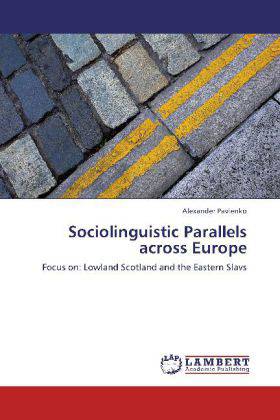
- Afhalen na 1 uur in een winkel met voorraad
- Gratis thuislevering in België vanaf € 30
- Ruim aanbod met 7 miljoen producten
- Afhalen na 1 uur in een winkel met voorraad
- Gratis thuislevering in België vanaf € 30
- Ruim aanbod met 7 miljoen producten
Zoeken
Sociolinguistic Parallels across Europe
Focus on: Lowland Scotland and the Eastern Slavs
Alexander Pavlenko
Paperback | Engels
€ 63,45
+ 126 punten
Omschrijving
Comparisons of the linguistic situation established by English and Scots in Lowland Scotland with other situations constituted by pairs of closely cognate languages has become a popular approach in the field of Scots studies. Closely cognate East Slavic languages, Russian, Ukrainian and Belarusian, can provide abundant material for observation in this respect. Four chapters of this book focus on the major historical and sociolinguistic parallels between Scots on the one hand and Ukrainian and Belarusian on the other, and compare the key stages and trends in their social history from the Middle Ages to the present day. Two other chapters deal with the Russian toponyms derived from Scottish personal names in the territory of the former Russian Empire. Such place-names constitute a noteworthy part of the Scottish legacy in Russia. The final chapter considers a striking example of parallel lexical development in Shetland Norn and Old Russian which may shed more light on the universally recognized etymologies.
Specificaties
Betrokkenen
- Auteur(s):
- Uitgeverij:
Inhoud
- Aantal bladzijden:
- 100
- Taal:
- Engels
Eigenschappen
- Productcode (EAN):
- 9783659276682
- Verschijningsdatum:
- 30/10/2012
- Uitvoering:
- Paperback
- Afmetingen:
- 150 mm x 5 mm
- Gewicht:
- 151 g

Alleen bij Standaard Boekhandel
+ 126 punten op je klantenkaart van Standaard Boekhandel
Beoordelingen
We publiceren alleen reviews die voldoen aan de voorwaarden voor reviews. Bekijk onze voorwaarden voor reviews.








